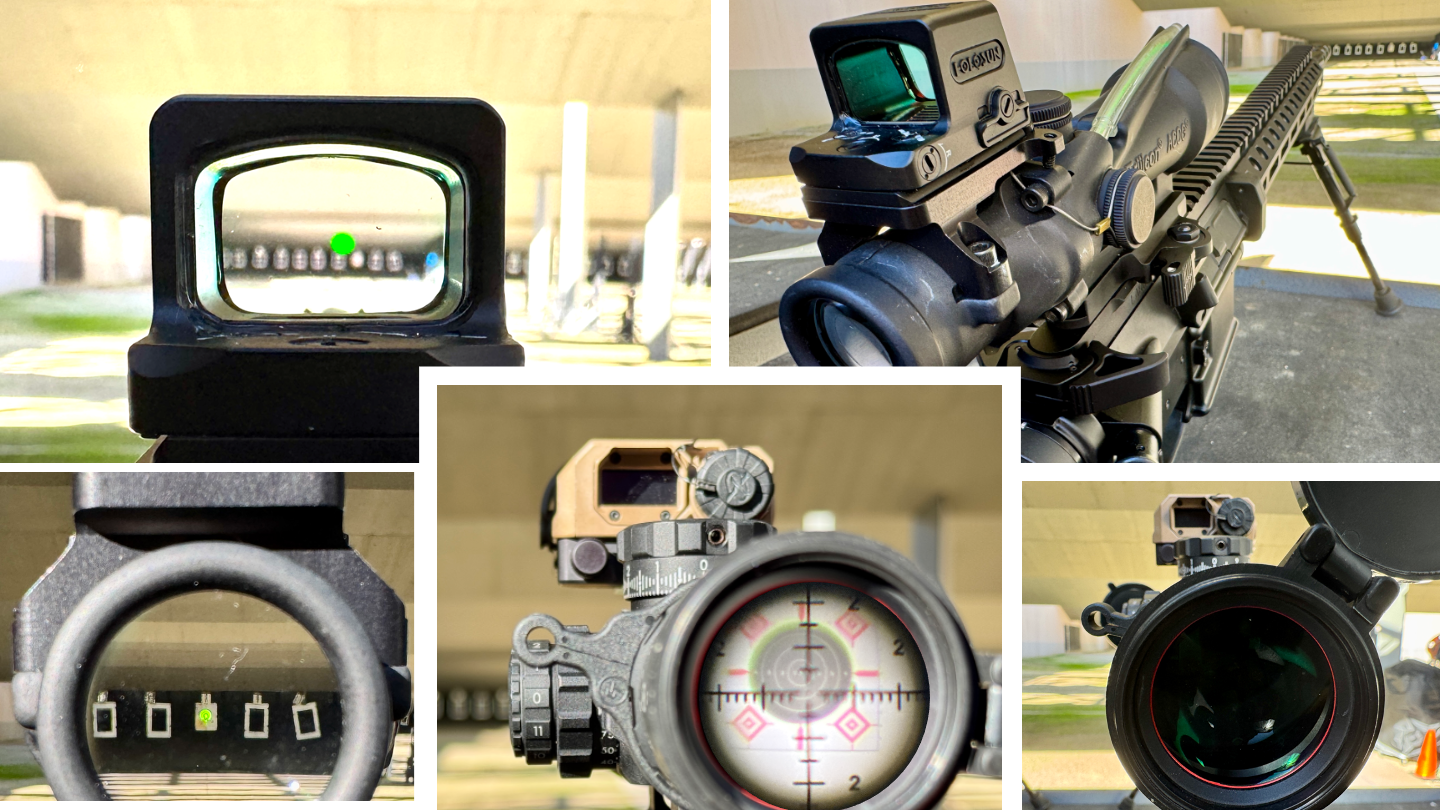The 2018 IACP National Law Enforcement Policy Center Active Shooter Model Policy states, “Whether on or off duty, in uniform or civilian clothes, [an officer] may determine that immediate tactical intervention is necessary and reasonable to stop the threat.”
That means no waiting for SWAT or even backup. With what we’ve seen happen just after the new year, the first officer on the scene might need more precision firepower than the average patrol rifle chambered in 5.56 can provide.
In discussions with firearms instructor and fellow columnist Todd Fletcher, we came up with an interesting concept. Equipping officers with a patrol rifle chambered in 6.8mm Remington SPC (Special Purpose Cartridge) and interchangeable optics stored in their trunk.
The 6.8 cartridge
Developed by Remington Arms in collaboration with members of the U.S. Army Marksmanship Unit and United States Special Operations Command, the 6.8mm SPC is midway between the 5.56 and 7.62 cartridges in bore diameter.
One of the main appeals of the 6.8 SPC II cartridge is its impressive muzzle velocity — typically around 2,500-2,700 feet per second (fps) with factory-loaded ammunition. From a 16” barrel, an average 110gr projectile will drop to subsonic speeds at ~825yds, giving you a flat trajectory for at least 1,000 yards.
A key point for LE is that a 6.8 SPC upper can be swapped onto an AR-pattern rifle with no more than a buffer spring change and new magazines. With this cartridge in mind, let’s walk the SHOT Show floor looking to build the ultimate patrol rifle.
A selection of optics
Trijicon was the first stop, where we checked out the Trijicon Credo LPVO and ACOG (Advanced Combat Optical Gunsight) lines.
Engineered to perform at both CQB distance and more extended ranges, the Credo 1-10x28 features a first focal plane design and a light, slim body style.
The TA31RCO is just one of the handful of models that make up Trijicon’s ACOG line. Designed for the USMC’s M16A4 weapon system, it incorporates dual illumination technology using a combination of fiber optics and self-luminous tritium. Like several of the dozen Trijicon ACOG sights, mounting bosses are integrated into the housing above the eyepiece to allow the easy addition of any RDS with a Trijicon RMR footprint.
You cannot talk about military or LE optics without a stop by EOTECH. The super short Vudu 3-9x32 SFP is constructed of aircraft-grade aluminum to be compact and lightweight. This second focal plane design is fog-, water- and shock-resistant, with turrets that offer ¼ MOA adjustments and are capped for protection. A rotary dial provides an illuminated reticle with 10 brightness settings. The base is compatible with any aftermarket mini-ACOG mounts.
For CQB, EOTECH offers a version that includes a ring mount and EFLX RDS that can be mounted to the front tube section, positioned at 12 o’clock or at 45-degree offsets for close or moving targets. MSRP for the VDU3-9PKG1 is $1,429.
Below: Police1 columnist Todd Fletcher visited the EOTECH booth at SHOT Show 2025.
Return to zero mounts
LaRue Tactical offers precision-machined scope mounts made in their own CNC machine shop from aluminum bar stock. A key selling point is the locking toolless speed levers that allow an operator to swap in the most appropriate optic for the mission at hand in seconds — LPVO or ACOG for CQB and close distance sniper shots, or a scope with or without a rangefinder or ballistic computer mounted above it on a diving board for longer shots. If the optic is moved to another firearm, chances are that it will still be within a few inches of zero.

Clockwise from top left: View through Holosun EPS MRS green, overview showing AR-pattern rifle with ACOG + RDS mounted on top, operator view of scope with RAPTAR up top, view through 3-18X50MM scope, view through ACOG. All at 100 yards. The RDS is used for fast and accurate CQB shots, the ACOG can be used for CQB or hit probability out to 800 meters, and the scope can show you the expression on the target’s face at up to 200 meters.
Photos/Ron LaPedis
Battle computer does the aiming for you
Wilcox showed us their RAPTAR Xe (Rapid Targeting & Ranging Module), which allows the operator to illuminate a target out to 1800m and quickly generate a ballistic solution, all while keeping their eyes on the target. The integrated ballistic computer measures temperature, pressure, humidity, inclination, cant and heading. In addition, wind speed and direction may be entered manually or via Bluetooth, say from a Kestrel 5700, to calculate a ballistic solution.
The RAPTAR Xe includes a laser range finder and integrated ballistic solver, IR flood, IR Pointer, and a visible laser pointer on a single optical bench, so zeroing one zeroes all. The 3 buttons on the ERGOTCO Xe activation keypad mirror the unit’s 3 main buttons (laser/up, fire and menu/down). It is powered by one CR123 battery and mounts to any Picatinny rail secured by two shock nuts.
For a sniper, the RAPTAR is an aid that can get them on target faster without performing the calculations that would be needed using only a scope or scope with rangefinder. For a patrol officer that needs to take a life-saving shot at distance, the RAPTAR can tell them how to shift their reticle or turn their turrets to get them onto a target without the specialized knowledge that snipers have spent years acquiring.
I used a RAPTAR during range day to consistently hit animal-sized steel out to 517 yards using an LMT MWS .308 with a Nightforce ATACR up top — even though I never took a shot longer than 100 yards in the past. I guess my trigger discipline paid off.
Let me illuminate
Of course, any patrol rifle would be naked without a light with a remote switch. There are two ways to approach weapon lights — a dedicated weapon light with a built-in mount for your weapon (Picatinny, M-LOK, ARCA), or a handheld light inserted into mounting rings and a tailcap with a remote switch. The benefit of the latter is that when the scene is secure your weapon light can be unmounted and used as a spare handlight.
The SureFire Scout Light Pro falls into the second category. With its recoil-proof, ultra-high-output LED delivering 1000 lumens of blinding white light, the Scout Light Pro is ready for action. Its proprietary TIR lens shapes the light into a far-reaching beam with ample surround light for exceptional peripheral vision, making it ideal for medium to longer-range applications. It comes with mounting hardware for Picatinny and M-LOK rails. An optional tailcap is available which supports the model ST07 tape switch.
Modlite also follows the handheld light inserted into mounting rings approach and offers nearly a dozen rifle lights. Modlite gets its name from the completely modular nature of their lights. While they are sold in packages, customers are welcome to select their choice of head, body, tailcap, and mount to make up the perfect light for any mission. This approach also allows officers to keep a box of parts close at hand to swap parts into their EDC to suit the mission at hand. Pistol light broken? Swap a couple parts from your rifle light and you’re ready to go again.
Your rifle needs some feet
A patrol or sniper rifle should have feet in case you need to stabilize it for a target that is further away, or if you need to wait for the target to move into a location where you have a shot.
Trusted by hunters, the military and LE, US-manufactured Harris bipods are available in dozens of configurations and come with M-Lok, Picatinny, Picatinny quick detach, and sling swivel stud mounts. Heights are available from 6-27” with notched, smooth, self-leveling, and quick deploy legs. A letter/number model decoder is available on this page.
Summary
There are so many good weapons and accessories available to you to help you build a patrol rifle perfect for your mission — even if that mission changes when you pull up to the scene.
You can configure your rifle for the mission you run the most and have accessories available to pop into place in minutes should the mission change. In a pinch, a patrol rifle with the right ammo and optics can fill in as a sniper rifle until SWAT snipers arrive. This article listed just a few of them, but keep an eye on SHOT Show coverage from Police1 because we’ve got a lot more to show you.






